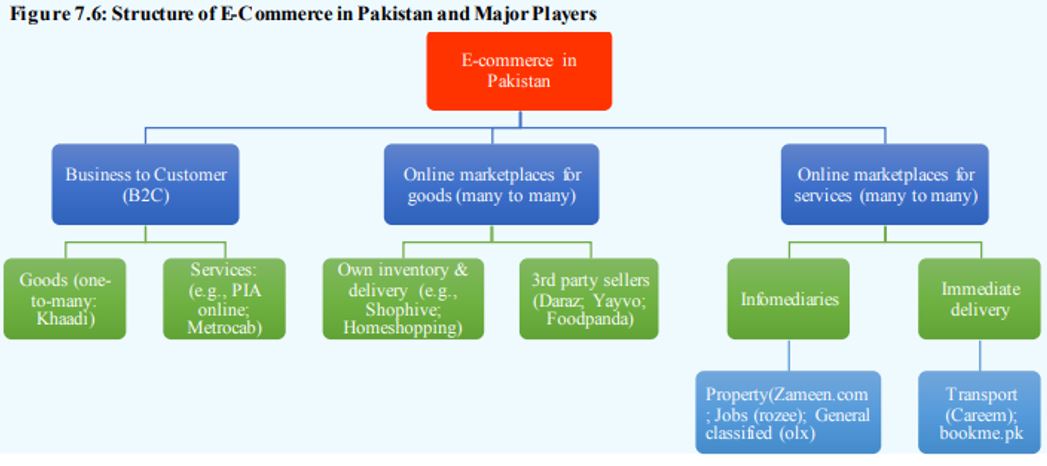The sales of local and international e-commerce merchants reached Rs 20.7 billion in FY17 and Rs 40.1 billion in FY18 – an encouraging growth of 93.7 percent, according to SBP data.
However, the data only covers transactions made via digital channels (credit/debit cards, interbank funds transfer (IBFT), prepaid cards, and mobile wallets). This is important to note as the market estimates put the share of postpaid cash on delivery (COD) settlements at around 80 to 90 percent of the total volume, and about 60 percent of the total value of e-commerce in Pakistan.
Extrapolating accordingly, the figures for total e-commerce activity in FY17 and FY18 may have touched Rs 51.8 billion and Rs 99.3 billion respectively.
E-Commerce: Transforming the Retail Paradigm
In Pakistan, leading producers of apparel, smartphone, food, and electronics industries now have a one-to-many online “e-retailing” channel in place. However, the more popular and established model of e-commerce is the online marketplace system.
Online marketplaces are platforms that allow transactions and dealings between multiple buyers and sellers. Reducing search and contractual costs for the parties due to computerized systems and common digital infrastructure, help increase efficiency by allowing swift transactions and providing co-sales services such as data analytics and payment platforms.
In Pakistan, most of the major e-commerce players are either online marketplaces for goods – such as Shophive, Daraz.pk (for consumer electronics and apparel, etc.), and FoodPanda (for food delivery) – or online marketplaces for services via immediate delivery – like the ride-hailing platforms Careem and Uber.
Then there are online information and financial intermediaries – or infomediaries, as they are often called – like PakWheels (for automobile sale and purchase), Rozee.pk (job hunting and recruitment), and Zameen.Pk (real estate business). These channels serve to fill information gaps and mostly earn profits through advertisements, contract making, and commission fees.
Pakistan has witnessed exponential growth in Ecommerce activities over the past few years. Lured by lower transaction costs, convenience and expanding internet penetration, both enterprises and consumers have started shifting their transactions online. Thus far, business-to-consumer (B2C) side of the ecommerce has been the main beneficiary, though investments are underway to kick start the business-to-business (B2B) e-commerce on a large scale as well.


























